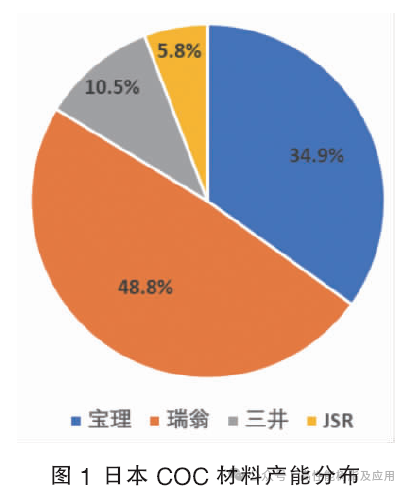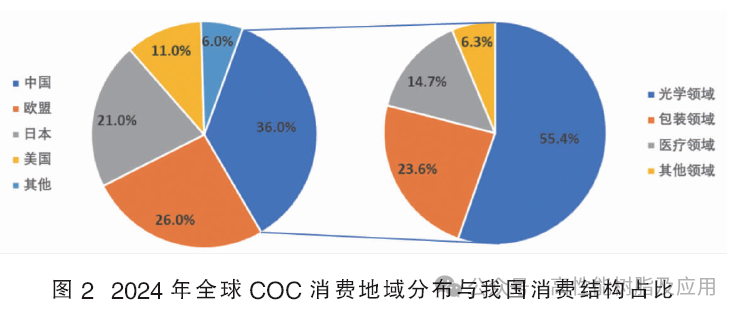Sinopec launches cyclo-olefin copolymer (coc) project! global
Recently, the fixed asset investment project for the cyclic olefin copolymer (COC) unit of Sinopec (Tianjin) Petrochemical Co., Ltd. has been registered.
Project Name:Sinopec (Tianjin) Petrochemical Co., Ltd. Cycloolefin Copolymer (COC) Plant Project
Declaration Serial Number:202509120254
Item Name:Domestic Fixed Asset Investment Project Filing - New Application
Implementing Entity:Administrative Approval Bureau of the Economic Development Zone
Filing Date:2025-09-12
Sinopec (Tianjin) Petrochemical Co., Ltd.'s cyclic olefin copolymer (COC) project is an important development in its high-end polymer sector.
Project Basic Information: The company's cycloolefin copolymer project is located within the olefin department, and the construction content includes850 tons/year norbornene unit and 1000 tons/year cycloolefin copolymer unitThe above-mentioned content translates to: "As well as supporting facilities such as loading and unloading stations, packaging warehouses, power distribution and transformation, and equipment rooms, with an annual operating time of 8,000 hours, the COC production capacity is 1,000 tons/year."
Sinopec Group's obtained patents related to cycloolefin copolymers include:
A method for the continuous aggregation preparation of cycloolefin copolymers.Applied by China Petroleum & Chemical Corporation and Sinopec Shanghai Petrochemical Company Limited, the publication number is CN120383694A, and the application date is January 2024. This patent directly obtains a toluene solution of norbornene through distillation. The solution is in liquid form, making it easier to transport through pipelines, and allows for the subsequent copolymerization with ethylene, achieving continuous preparation of cyclic olefin copolymers, which is more economical.
Ethylene-norbornene copolymer and its preparation method.The patent application, submitted by China Petroleum & Chemical Corporation and Sinopec (Beijing) Chemical Research Institute Co., Ltd., has the application number CN202111158844.5 and was authorized on May 7, 2024. The preparation method for the ethylene-cycloolefin copolymer includes using a catalyst composition to carry out the copolymerization reaction of ethylene and cycloolefin, where the catalyst composition comprises metallocene compounds, co-catalyst components, and phenols. This method can increase the molecular weight of the polymer and enhance the content of cycloolefin in the copolymer, thereby improving the glass transition temperature of the polymer.
System for preparing polar ethylene-cycloolefin copolymers and their applications, polar ethylene-cycloolefin copolymers and their polymerization methods.The patent, applied by China Petroleum & Chemical Corporation and Sinopec (Beijing) Research Institute of Chemical Industry Co., Ltd., with the application number CN202210345346.X and publication number CN116925275A, involves a system for preparing polar ethylene-norbornene copolymers and its applications, polar ethylene-norbornene copolymers, and their polymerization methods. The system includes at least one metallocene compound, at least one aluminoxane, at least one organoaluminum compound AlR'mX3-m, ethylene, and a monomer represented by formula I. When the system is used for polar ethylene copolymers, it not only has high activity but also can produce polar ethylene-norbornene copolymers with high molecular weight and high comonomer content.
Ethylene-norbornene copolymer and its preparation method.The patent applied for by China Petroleum & Chemical Corporation and Sinopec (Beijing) Chemical Research Institute Co., Ltd., with application number CN202310715944.6 and publication number CN119143911A, was filed on June 2023. The preparation method of ethylene-cycloolefin copolymer involves using a catalyst composition to carry out a copolymerization reaction between ethylene and cycloolefin, where the catalyst composition includes a transition metal compound of the structure shown in formula (1) and a co-catalyst component. This method has the advantage of improving copolymerization activity.
Cyclic olefin copolymers (COC) are a type of chemical resin material that have emerged in recent years. Due to their high transparency, good dimensional stability, low moisture absorption, and chemical resistance, they are widely used in optics, medical, and electronics fields, showing great development potential.
In the global COC market, Japanese companies hold a dominant position due to their extensive technical expertise and strong research and development capabilities. Key manufacturers include Zeon Corporation, Polyplastics, Mitsui Chemicals, and Japan Synthetic Rubber (JSR), with a total production capacity of approximately 86,000 tons per year, as shown in the chart. Zeon Corporation and Polyplastics, leveraging their technological advantages in the optical and medical fields, occupy a significant market share. Mitsui Chemicals demonstrates strong competitiveness in the optical and automotive lens sectors, meeting the demand for high-performance COC materials through continuous technological innovation and product upgrades. This differentiated competition strategy allows Japanese companies to maintain a leading position in the COC market, while also driving the sustained development of the global COC industry.

In recent years, the global COC (Cyclic Olefin Copolymer) industry has experienced rapid development, with expanding application fields and increasing demand, leading to industrial-scale mass production. However, there are still some issues in the course of development, such as technical challenges in the production process, high production costs, uncoordinated inter-industry development, and potential threats from international competition, which constrain the further development of the COC industry. In the future, efforts need to be made in several areas, including enhancing policy support, strengthening technological innovation, reinforcing industry chain collaboration, and expanding application markets, to promote the green development of the global COC industry.
In 2024, the global consumption of COC is approximately 90,000 tons, with China being the largest consumer, accounting for 36% of global consumption. The consumption structure of COC in China is as follows: the optical field accounts for 55.4%, packaging and medical fields account for 23.6% and 14.7%, respectively. This consumption structure reflects the high dependence on COC materials in the optical field. As downstream industries such as consumer electronics and new energy vehicles shift towards domestic markets, the demand in the optical field will continue to grow.

By the end of 2025, the global consumption of COC is expected to grow to 118,500 tons, an increase of 24% year-on-year. In particular, the rapid development of emerging application fields such as mobile phone lenses, vehicle-mounted lenses, and AR/VR devices provides a broad market space for COC materials.
In the process of the global COC (cyclic olefin copolymer) industry development, there are a series of technical barriers that restrict the development and application of COC materials. Firstly, the preparation of cyclic olefin monomers is a key challenge. Currently, this technology is mastered only by a few Japanese companies, and other countries face varying degrees of technical barriers. Furthermore, the screening and development of metallocene catalysts is another core technical challenge that restricts the development of the COC industry. Metallocene catalysts are an indispensable part of COC production, with properties such as solubility, high activity, and homogeneous catalytic effects. They can adjust the polymer molecular weight and design the polymer microstructure by altering polymerization temperature, catalyst concentration, or ligands. However, the preparation of metallocene catalysts is extremely challenging and is referred to as the "crown jewel" of the catalyst industry. Their complete system includes the main catalyst, co-catalyst, and carrier, which need to be selected according to the reaction. For a long time, companies have been blocking this technology. The above factors further increase the difficulty of technical breakthroughs. Therefore, enhancing independent innovation capabilities, overcoming technical bottlenecks, and achieving independent and controllable technology are the primary tasks for developing the COC industry.
【Copyright and Disclaimer】The above information is collected and organized by PlastMatch. The copyright belongs to the original author. This article is reprinted for the purpose of providing more information, and it does not imply that PlastMatch endorses the views expressed in the article or guarantees its accuracy. If there are any errors in the source attribution or if your legitimate rights have been infringed, please contact us, and we will promptly correct or remove the content. If other media, websites, or individuals use the aforementioned content, they must clearly indicate the original source and origin of the work and assume legal responsibility on their own.
Most Popular
-

List Released! Mexico Announces 50% Tariff On 1,371 China Product Categories
-

Nissan Cuts Production of New Leaf EV in Half Due to Battery Shortage
-

New Breakthrough in Domestic Adiponitrile! Observing the Rise of China's Nylon Industry Chain from Tianchen Qixiang's Production
-

Dow, Wanhua, Huntsman Intensively Raise Prices! Who Controls the Global MDI Prices?
-

Mexico officially imposes tariffs on 1,400 chinese products, with rates up to 50%






